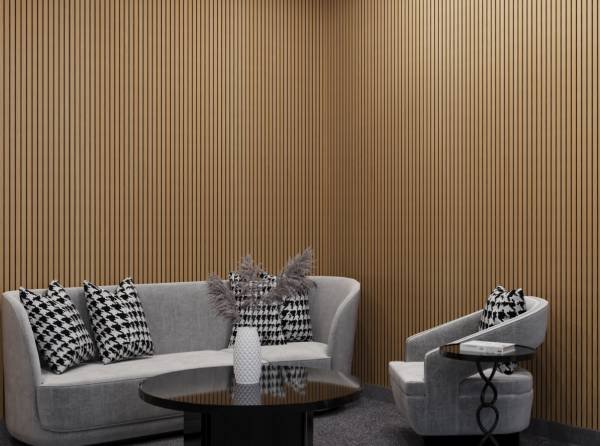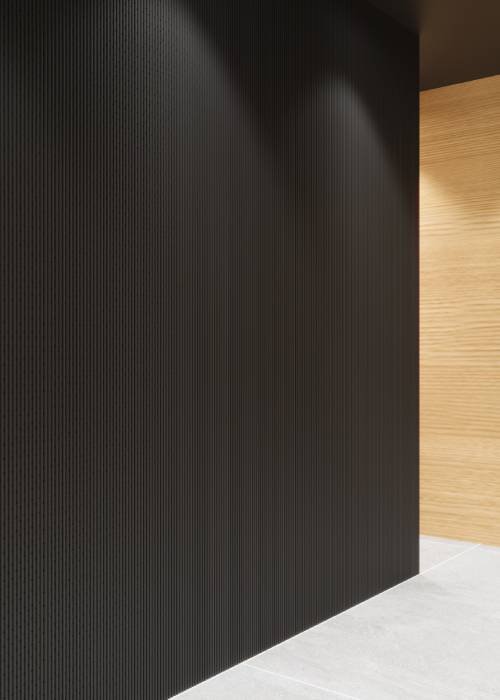Acoustic boards help lessen undesirable reflected sound in any room...
Sound is critical in a theatre or auditorium, as we all know. Not only does the best seat in the house usually have amazing acoustics, but sound control is also important in various sorts of environments. Excessive noise in schools has been linked to lower student test scores and lower worker productivity, according to studies. The following are some of the benefits of soundproofing an office:


Because wood is a light material, it does not perform well in terms of sound insulation. The longitudinal direction of the grain conducts sound better than the perpendicular direction. A dense wooden structure reflects sound and may be easily transformed into sound-channeling surfaces.
In most cases, sound insulation in timber buildings can be achieved structurally through the use of multi-layered constructions. A so-called board resonator is created by placing porous absorption material behind the board or panelling in addition to an air gap, such as a layer of thermal insulation, which effectively dampens low sounds that are problematic for light constructions when it vibrates. A perforated resonator can also be made by making wooden battening or holes in wooden surfaces, which effectively dampens medium-to-high-pitched noises.
The goal of wood protection is to preserve the excellent attributes of wood and wood products while also preventing harm from decay, fungus, pests, and other factors. Wood can usually be left untreated for lengthy periods of time if it is adequately protected structurally. Maintaining the moisture level of wood below 20% is a need for its long-term resilience, among other reasons. Chemical protection can be employed if wood must be stored in conditions where it cannot be protected solely by structural means. Spraying, coating with or dipping in a wood protective chemical, and pressure- and vacuum impregnation are examples of these procedures.
Sound is reflected more than it is absorbed by wood. However, due to its porous nature, some sound is absorbed. For different frequencies, sound waves have varied lengths.
While soundproof panels are useful for blocking out noise and reducing noise transmission in a room, they are not as effective as other soundproofing techniques. Installing soundproof panels is an excellent alternative if you only need a little amount of soundproofing and don’t have a significant budget. If you require soundproof panels, go for ones made of foam, preferably with an egg crate pattern, though wedge ridge panels are nearly as excellent. If you can’t buy foam panels for whatever reason, perforated wood is the next best thing.
If you want to minimise noise for any reason, soundproof panels are a relatively inexpensive choice to consider when compared to other soundproofing solutions. Only because they have a moderate amount of bulk, soundproof panels work quite well in dampening mid and high-frequency sound waves. Because soundproof panels are less capable of insulating low-frequency sound waves with long wavelengths, they do not completely prevent noise.
Acoustic panels are typically built of a timber frame with multiple layers of acoustic foam. Foam is the greatest material for an acoustic panel since it absorbs all frequencies on the surface, resulting in a resonance inside the hollow. As a result, noise cancelling occurs above the hollow. Helmholtz resonance is the name for this phenomenon.
A sound-insulating core material, such as PET or mineral wool, is commonly placed inside a wooden frame and then covered with porous fabric. They’re made to trap sound waves and reduce reverberation in small spaces. Sound waves will bounce off solid objects such as walls and ceilings in most big indoor environments, causing echoes and boosting the overall loudness. When sound waves strike a specially designed acoustic panel, however, the porous outer layer lets the sound to pass through to the core material, which absorbs the noise by turning the waves into vibrations and generating a small amount of heat.
When it comes to building design, acoustics are usually the last thing on your thoughts. The majority of individuals are unaware of acoustic difficulties until the structure is occupied. As a result, the majority of soundproofing measures are installed after the fact. Soundproofing from the outside is effective, but it isn’t necessarily attractive.
There is no way to tell if a product is rodent resistant without conducting a test. Rock Wool’s popularity as rodent-resistant insulation is based primarily on word of mouth and an absence of negative criticism from a large number of customers who have used it. However, if a particular rodent is a nuisance in your area, the best strategy is to protect the insulation.
Mineral wool blown-in insulation, commonly known as Rock Wool blown insulation, is a famous attic, wall cavity, and ceiling cavity insulation option. It’s made of rock, furnace slag, and other raw ingredients in a granular form that one can apply loosely. Mineral wool blown-in insulation is a popular insulation choice because of its porous substance that traps air. It also has fire resistance and thermal and acoustic barrier properties. You can use it in every type of building and any climate zone.
Unidus is dedicated to achieving the most significant possible level of excellence in all they do. They are proud of their constant, steady efforts to improve their operations to ensure that every product that leaves any of their facilities exceeds your expectations.
Rock Wool warrants that products sold to Purchaser will fulfill the requirements listed in the most recently available Rock Wool data sheets at the time of manufacturing. If the products are not in compliance with the specifications, Rock Wool may, in its sole discretion, replace or repair them at the time of delivery.
If the flaw is evident, you must place the claims within three days. If the problem is not visible, you must report the claims within ten days. This warranty excludes services to repair damage to the product caused by an accident, disaster, misuse, abuse, or non-Rock Wool modification.
The general terms and conditions of sale lessen Rock Wool’s overall liability and potential remedies. All other warranties and conditions, expressed or implied, including the warranties of merchantability and fitness for a particular purpose, are overtaken by the limited warranty in the terms and conditions.
Acoustic boards help lessen undesirable reflected sound in any room...
Acoustic boards help lessen undesirable reflected sound in any room...
Open spaces have been known as the trending layout for...
WhatsApp us